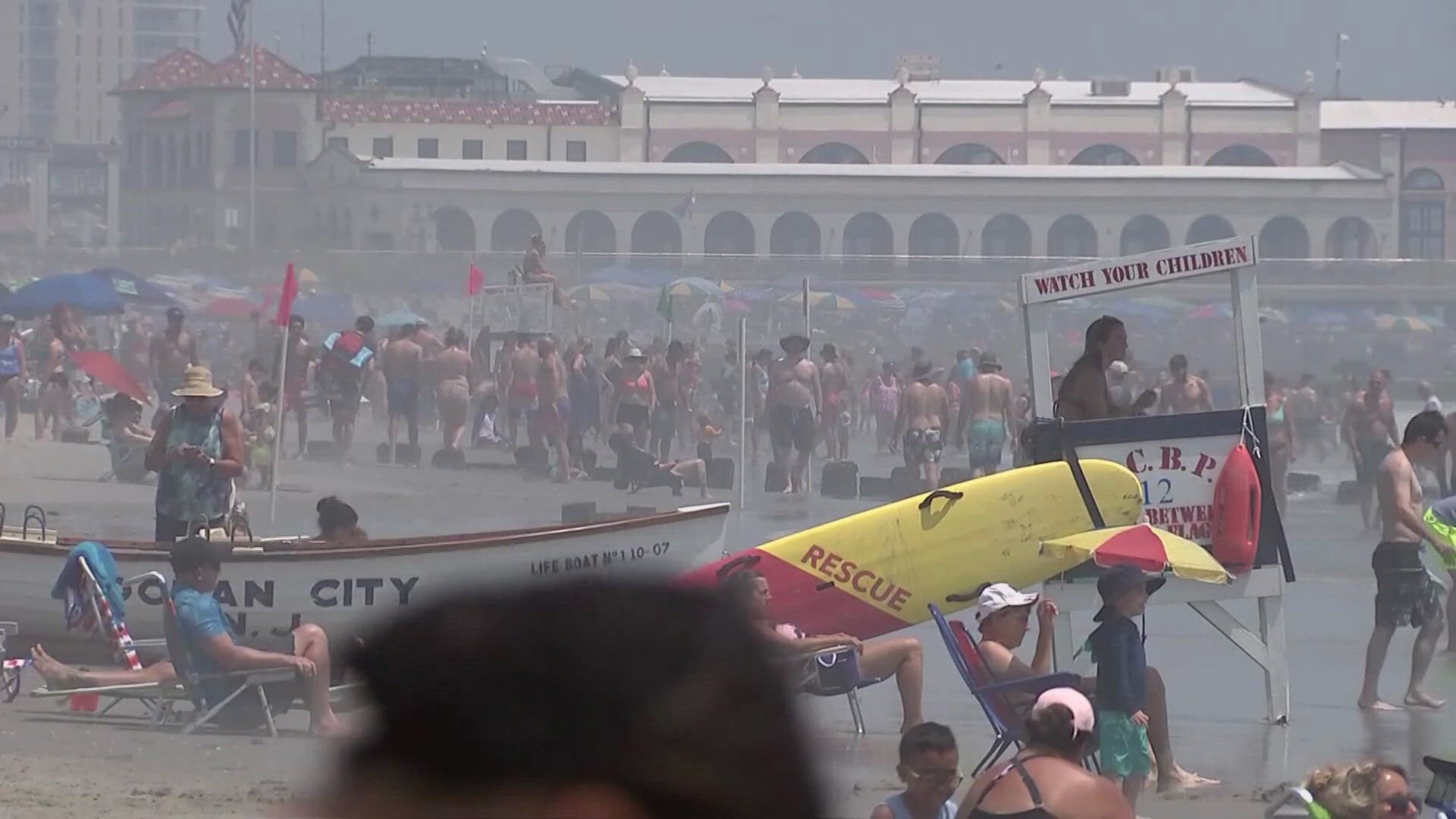WASHINGTON — A day at the beach can go from catching waves, to desperately trying to save a life. Digging holes at the beach is something many people, including kids do for fun. But experts warn that in a flash, it could become deadly when these sand holes suddenly collapse with no warning. Since February, one child has died from a sand hole collapse and two other children had to be rescued when the sand holes they were digging fell. It's panic and pain that Ocean City Beach Patrol Captain Butch Arbin, hopes no family ever has to feel. Abrin describes what's it like when someone gets trapped in a sand hole.
"When you’re having a total sand collapse, when you breathe in our lungs expand, when you breathe out, they collapse and the sand fills in. It's like.. like a boa constrictor around you. And even though your head may be exposed, it's harder and harder to breathe," he explained.
Other experts like Dr. Stephen Leatherman, who specializes in coastal science at Florida International University, said that people have a window of about 3 to 5 minutes to have the best chances of survival. Leatherman, also known as "Dr. Beach", said sand is heavy and unstable. While it can hold together while it's wet, that changes once people dig a hole.
"By digging that hole, you're exposing the wet sand to the atmosphere and eventually it's going to dry out and collapse," Leatherman said.
Sadly it was the case for a little girl at Lauderdale by-the-Sea beach in Florida. During a winter beach trip in February, a brother 9, and sister 7, were doing what some kids do at the beach, dig a hole in the sand. Then suddenly, without warning or even time to react, the 4- to 5-foot-deep sand hole, collapsed. The boy was instantly covered up to his chest, his sister was completely covered. Bystanders were able to rescue the boy, but as they tried to dig his sister out, the sand hole continued to collapse. Unfortunately, she did not survive.
In June a 12-year-old boy in Michigan had to be rescued when a sand hole that he was digging collapsed on top of him. He was trapped for more than 10 minutes and had a faint pulse when he was rescued.
In July, a 16-year-old girl in California became trapped in a 7-foot sand hole. She was digging a hole with friends when she suddenly fell in. Rescue workers frantically dug her out as tides were rising.
Research published in the New England Journal of Medicine showed that most sand holes that collapsed were between 2 and 15 feet deep. Victims were between the ages of 3 and 21-years-old.
To be safe, experts recommend that if you dig a sand hole, it should not be deeper than two-feet. Arbin said there's a rule in Ocean City, that forbids digging a hole more than knee deep of the smallest person in the group. For example, if there is a family and the smallest person in the family is 4-years-old, the family should not dig a hole deeper than the 4-year-olds knee.
Arbin said even if parents are nearby, it's still not safe for kids to dig deep holes. He said digging someone out of a sand hole often takes a special technique. And if not digging properly, it could make matters worse as sand could become even more unstable.

